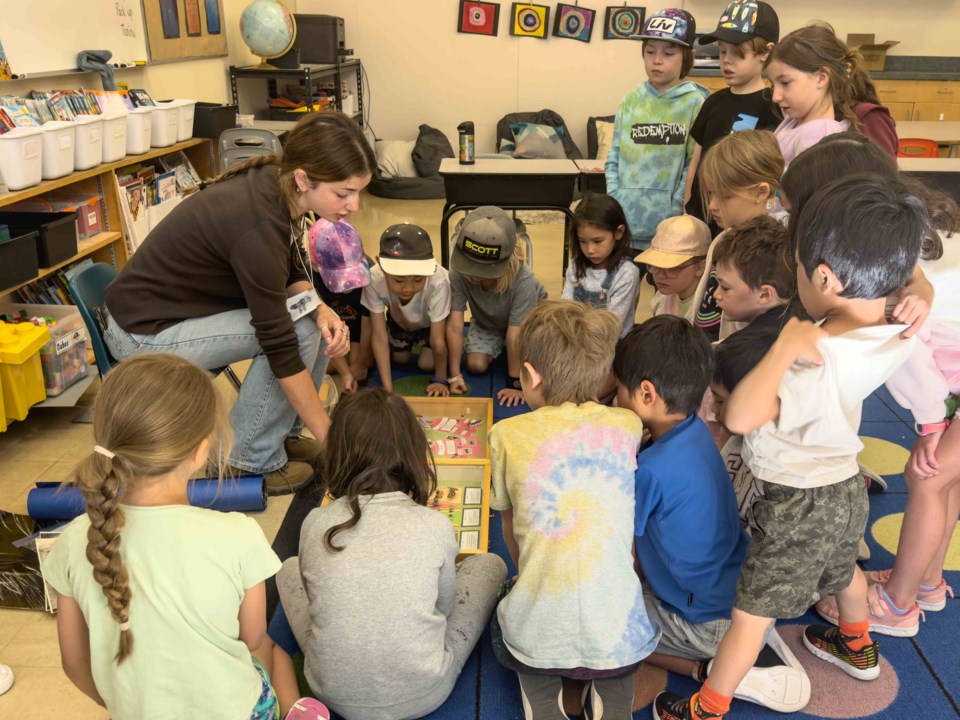When local biologist Bob Brett first started compiling a master list of Whistler’s flora and fauna, only 435 species had been officially recorded in the resort to date.
Now, nearly two decades later, the Whistler Biodiversity Project’s catalogue is poised to exceed 5,000 species.
Much of that progress can be attributed to Whistler’s annual BioBlitz—specifically, about a third of species named on the list, Brett estimated. Each summer since the event’s first iteration, the non-profit Whistler Naturalists has invited a group of experts to scour the Sea to Sky for plants, animals and insects that haven’t yet been identified in Whistler or Pemberton, or in some cases, haven’t been identified anywhere.
“That was 2007, and at the current time we’re the longest-running BioBlitz in Canada,” said Brett, Whistler Naturalists co-president.
The focus has subtly shifted over the years, however.
“The emphasis on species identification and broadening our knowledge of what’s here; maybe the priority is lower than it used to be, just because now we are at 5,000-plus species,” he explained.
The event that was previously described as a 24-hour race against the clock to count as many species as possible eventually expanded to include classroom events each June, before the end of the school year. Whistler Naturalists widened BioBlitz’s scope in an effort to “try to get to more and more students,” in addition to more species, Brett added. “This year we busted the record by quite a lot,” he said.
Last month, a group of about 10 scientists from across the Pacific Northwest were in Whistler presenting to approximately 750 students in 38 classes: 12 at Spring Creek, 15 at Myrtle Philip, three at École la Passerelle, and four each at Whistler Waldorf and Whistler Secondary School (WSS).
“Our goal was to share with students first-hand that they are part of a larger world,” Whistler Naturalists co-president Kristina Swerhun explained in an email. “We hope these presentations increase a sense of wonder for students and help build appreciation for the world around them, which opens the door to stewardship.”
While younger students were captivated by topics like pollination and the food chain, this year’s BioBlitz presentations offered Whistler high-schoolers a particularly hands-on peek into a day in the life of a scientist. For the first time, WSS students helped provincial wildlife health biologists perform necropsies, or autopsies, on deer and black bear carcasses,to learn about wildlife anatomy and determine why the animals died. That information can offer hints “about what’s happening in the environment,” Swerhun explained in a phone call. (In this case, however, the deceased animals were collected after being hit by cars, she added.)
The presentations were all aimed “towards promoting stewardship and helping make good decisions to protect biodiversity,” Swerhun said.
Still, BioBlitz hasn’t abandoned its initial goal of bolstering Whistler’s species catalogue. “We’re still averaging about 100 new species a year,” Brett noted.
Last month, experts conducted species surveys throughout the valley, collecting samples and making observations in low-elevation areas like Loggers Lake, the Emerald Forest Wildlife Refuge and Brandywine, mostly targeting insects. Though results won’t be finalized for some time—“As we get into the more obscure groups, it takes longer and longer, often, to identify [species],” Brett said—this year’s BioBlitz will likely bring Whistler’s species list from 4,846 across the 5,000 mark.
About 25 more scientists will be back in Whistler next week to conduct species surveys in alpine terrain near Black Tusk and within Whistler Blackcomb’s tenure from July 25 to 27. While scientists volunteer their time to the cause, Whistler Naturalists covers experts’ travel and accommodation costs.
“We are in a transitional year because this is the smallest summer BioBlitz we’ve had since the beginning, and it’s all related to budget,” said Brett. “I still think we’re going to get some really cool results, but I would personally like to get [BioBlitz] back to a critical mass of maybe 30 scientists in three days rather than 20 or 25 into two-and-a-half days.”
Rest assured, the “small-but-mighty” group of experts participating in this year’s event “are literally the best in the Pacific Northwest in whatever field they’re in,” said Brett.
“The whole purpose of BioBlitz is to bring up as many scientists as possible, who have a really wide range of specialties,” he added. “No one can identify everything.”




